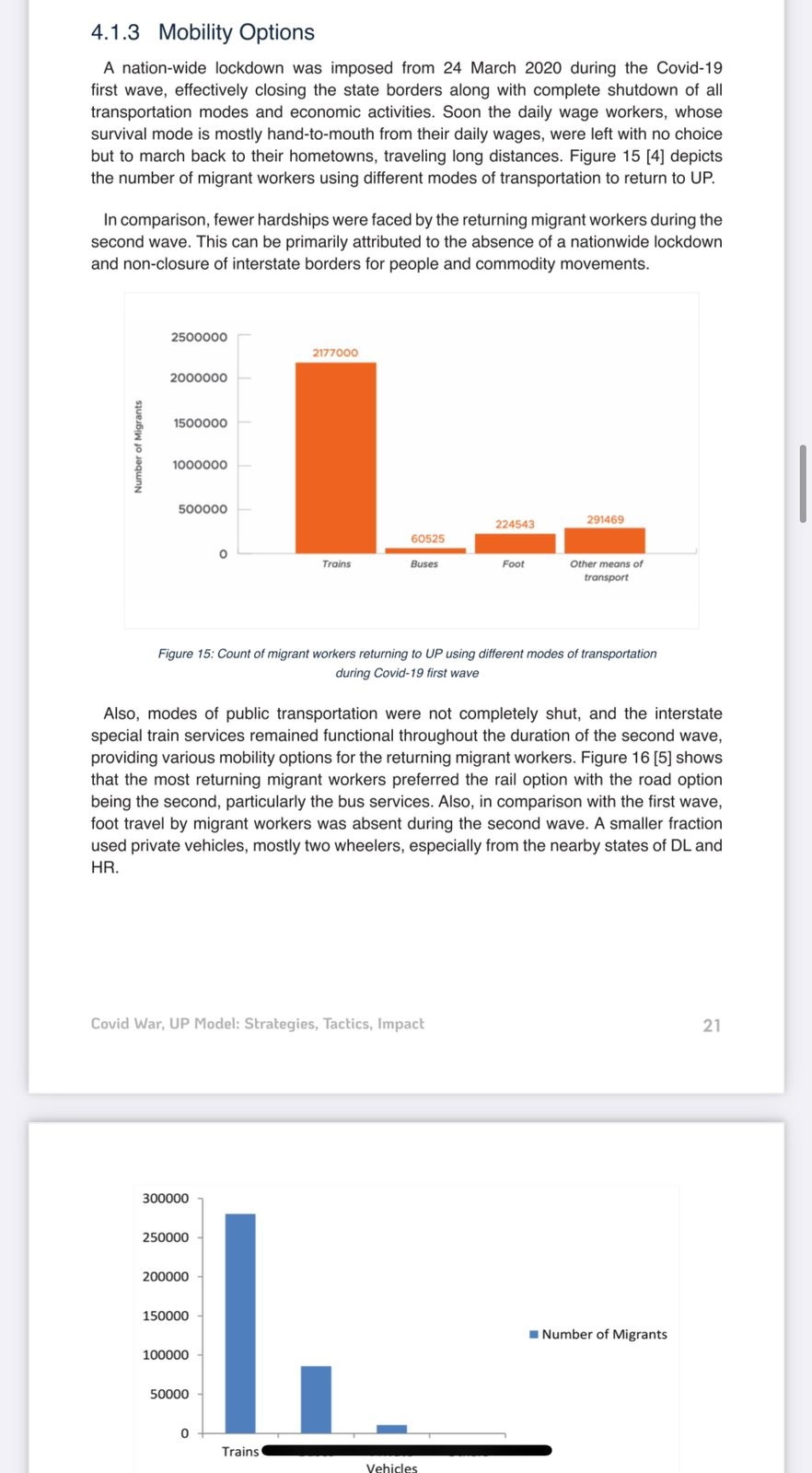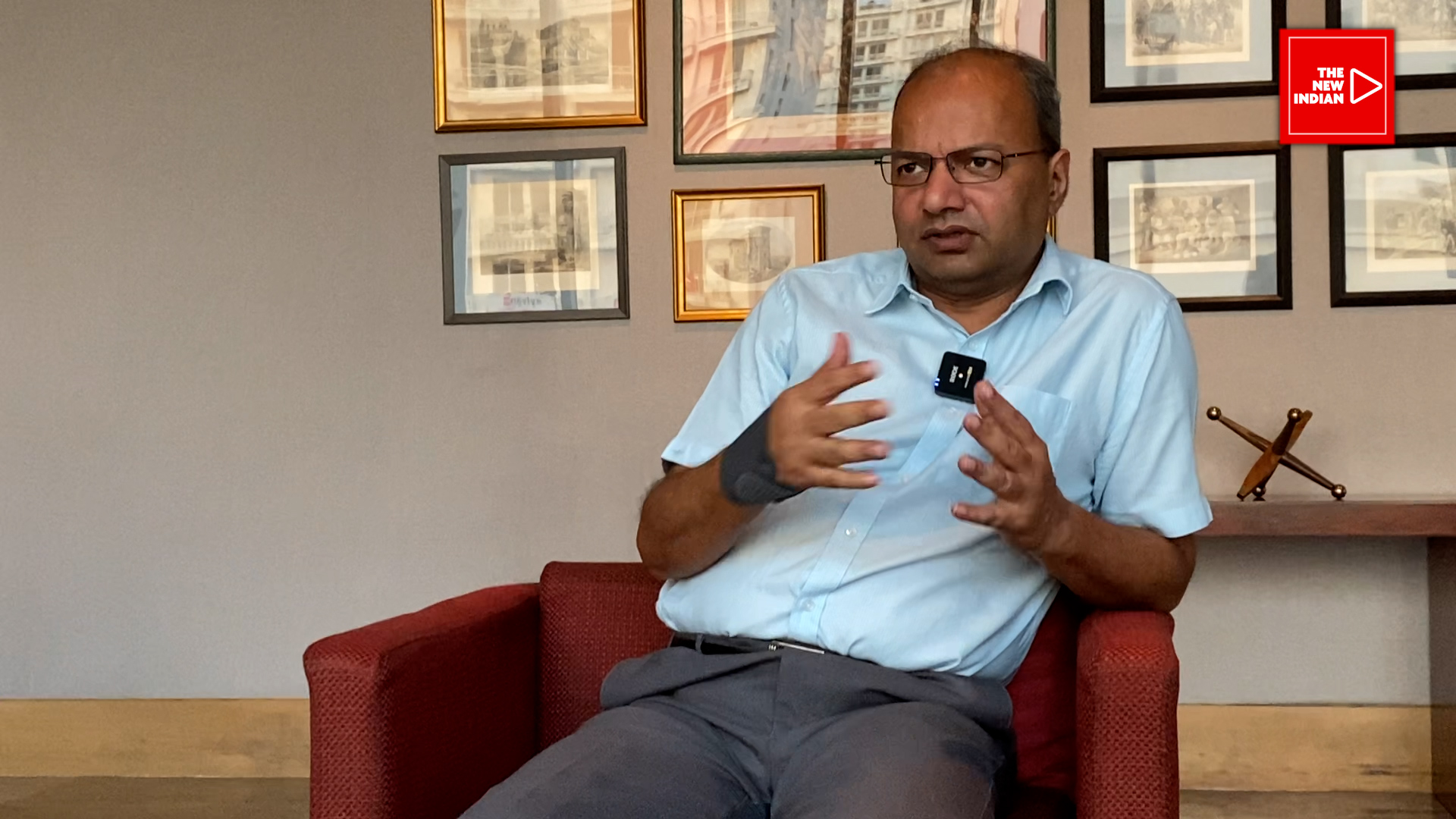LUCKNOW: A study by IIT Kanpur has said that the move by Yogi government in Uttar Pradesh to allow economic activity along with diverse innovations of free-testing of migrants, dedicated Shramik trains in partnership with Railways, skill mapping of migrant workers and DBT of Rs 1000 into their accounts helped shrink UP’s unemployment rate from 11 % to 4 % during COVID induced pandemic from March 2020 to July 2021, that now stands at even less than the national average.

“The ferocity of the delta variant-driven second Covid wave posed new challenges to UP’s healthcare system. Despite being most populous state , UP augmented Test Track and Treat (TTT) to Test, Track, Treat and Tackle approach. It conducted about 6.6 crore tests — the highest in country. Healthcare workers were motivated by 25 % increase in salaries. A notable achievement was in ensuring safety of containment zones while maintaining economic activities within, which softened the impact on economy and livelihood,” the study has said.
The study has said UP issued 2.67 lakh no objection certificates (NOC) during last one-and-half year, showing the business activity — an indicator of importance given by UP to sustain economic activities.
“Top four departments that contributed to 80% of NOCs include Labour department, Uttar Pradesh Power Corporation Limited (UPPCL) department, pollution control board and food safety and drug administration,” the study by IIT said.
The study has also said that UP did better than most neighbouring and southern states while comparing COVID cases with that of Karnataka (29 lakh), Maharashtra (63 lakh ), Kerala (33 lakh), Tamil Nadu (25 lakh), Delhi (14 lakh), Andhra Pradesh (19 lakh) and Chhatisgarh (10 lakh).
UP saw 17 lakh cases during first and second COVID waves. UP saw 97 deaths per million (DPM) as compared to 1045 in Maharashtra, 1023 in Delhi, 564 in Karnataka, 491 in Chhattisgarh, 481 in Tamil Nadu,329 in Odisha. West Bengal with 186 and Andhra Pradesh at 146 come next.
The study was released by a team of professors from IIT Kanpur led by Prof Manindra Aggarwal in Lucknow on Monday at Lok Bhawan.
The report has analysed UP’s handling of COVID using its SUTRA (Susceptible undetected tested (positive ) and removed approach model).
The study has used three key parameters for SUTRA model including contact rates, reach and detection ratio.
Professors from IIIT Prayagraj and BHU Varanasi have also contributed to the study.
Asked about why Kerala and Maharashtra saw surge and not Uttar Pradesh even though the first two states had imposed severe lockdown conditions during first and second waves, Aggarwal admitted that strategy by UP government was risky but the extensive RT PCR testing —known as “chasing-the-pandemic” — by its team of medicos and officials put the state in good stead.
“Kerala had begun doing testing huge during the middle of last year, that is during the first wave of the pandemic but ended with a whimper. As a result, Normalised test positivity rate (NTPR) for Kerala went to 3-4. Maharashtra was on the extreme end, only did targeted testing. UP on the other hand maintained consistency. Their NTPR was consistently below 1. That is a key component when you want to keep economy open and yet control the pandemic,” Aggarwal told The New Indian after releasing the study.
NTPR is term coined by IIT Kanpur and its calculated by dividing the test positivity rate with percentage of infected population.
The lower its value, the better the response of state during COVID is.
Maharashtra and Karnataka maintained a high NTPR value of above 3.
The study has said despite Uttar Pradesh being the most populous state of India, one of the reasons it could do better than most states during second COVID wave was that it could achieve high seropositivity without overloading the healthcare infrastructure except for a short period. This could be due to stronger immunity.
This was managed by distributing more than 33 lakh immunity booster kits, home management strategy for mild cases, extensive testing and surveillance and smart strategy of containment zones
It further says that around 71% of population had acquired immunity by June, as indicated by ICMR survey.
Aggarwal said that percentage or fraction of asymptomatic cases were higher in UP than other states, which he said could be due to higher use of Ivermectin or biological reasons.
“This needs to be probed further,” he pointed out.
The study says that UP also managed distribution and procurement of oxygen better than anyone else, becoming first state in India during second wave then to use Indian Air Force (IAF) to airlift oxygen tankers and tag the tankers with GPS to achieve real time tracking of oxygen.
“This completed real time oxygen management without wastage,” the study says.
The study has discussed the contentious issue of dead bodies floating in Ganga, saying that practice of immersing dead bodies during COVID was pronounced in UP even as some communities have been practising this since long.
The study has praised the efforts by two Yogi cabinet ministers including Suresh Khanna and Jai Pratap Singh for setting up 73,000 monitoring committees across 97,000 villages.
The IIT study has recommended that UP must avoid a strict lockdown in future too.

